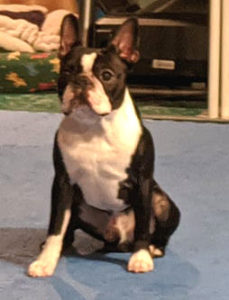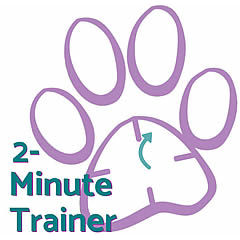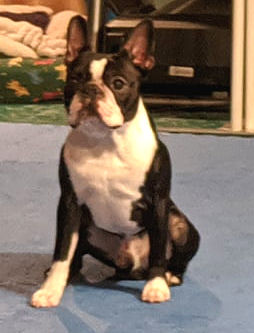Many people neglect to teach a release word to their dogs. If you don’t, how does your dog know it’s time to stop what they’re doing?
All good stories have three parts; a beginning, a middle, and an end. Dog behaviors or tricks are the same. Each should have the same three parts. Most people do fine teaching the beginning. They understand that a good set-up and focus is crucial.
The middle is sometimes trickier. Rather than teaching the dog to keep doing what it’s doing, they’ll constantly repeat the command. “SitSitSit.” And when they stop saying it, the dog thinks it’s done.
Rarely do we encounter people who emphasize the end, the Release Word. It’s the clearest way to signal that it’s time to move on.
Stop and Go
It doesn’t really matter what word you choose for a Release Word. Many people use “Free” or “Okay” or “Go.” We tend to recommend a word your dog doesn’t hear constantly (like okay). Trainers debate about this all the time. Some are convinced their dogs can discriminate between a command and normal conversation. Others think using a common word is a mistake. You should use a word you can remember and all family members will use.
Release words are most often used in conjunction with the “Stay!” After all, for every “stop” there should be a “go.” If you don’t teach your dog when it’s okay to stop staying, they’ll decide for themselves and the “Stay!” loses meaning.
Steps for teaching the Release Word
Start with the “Stay!” Get your dog to sit, either in front of you or at your side. Holding a treat, bring your hand up to your ear and slowly lower it toward your dog. If your dog moves any paw or their butt, bring the treat back up quickly. They are allowed to move their head or tail only.
If your dog doesn’t move, when your hand is lowered to your dog’s level, give them the treat. Repeat this about three or four times.
Here’s where the Release Word comes in. Don’t move – use exactly the same motion and posture you had for the “Stay!” part. This time, stop your hand’s downward motion slightly above your dog’s head. You want your dog to have to move to get the treat.
When your motion stops, say your dog’s Release Word and wait for them to hop up to get the treat. Don’t move and don’t repeat. Just wait for your dog to move on their own. If you want your dog to understand what a Release Word means, you have to let them figure it out. When they hear “Free!” It means they can move.
It takes patience

The Release Word is pretty easy for most dogs to understand. The hard part is pairing it with other behaviors. You can also use it for “Place!” And it makes a good ending for any other training game, like Puppy Push-ups, or Perch Work.
You don’t always need to use a Release Word. In the “Recall” exercise, you leave your dog in a “Stay!” and walk away. When you get to the other side of the ring, you call your dog to you. In this case, the new command (Come) tells your dog it’s time to do something else and you don’t need to double up with the Release Word.
Whenever you play training games with your dog, think about the beginning, middle, and end. It’s a story you and your dog will enjoy.







